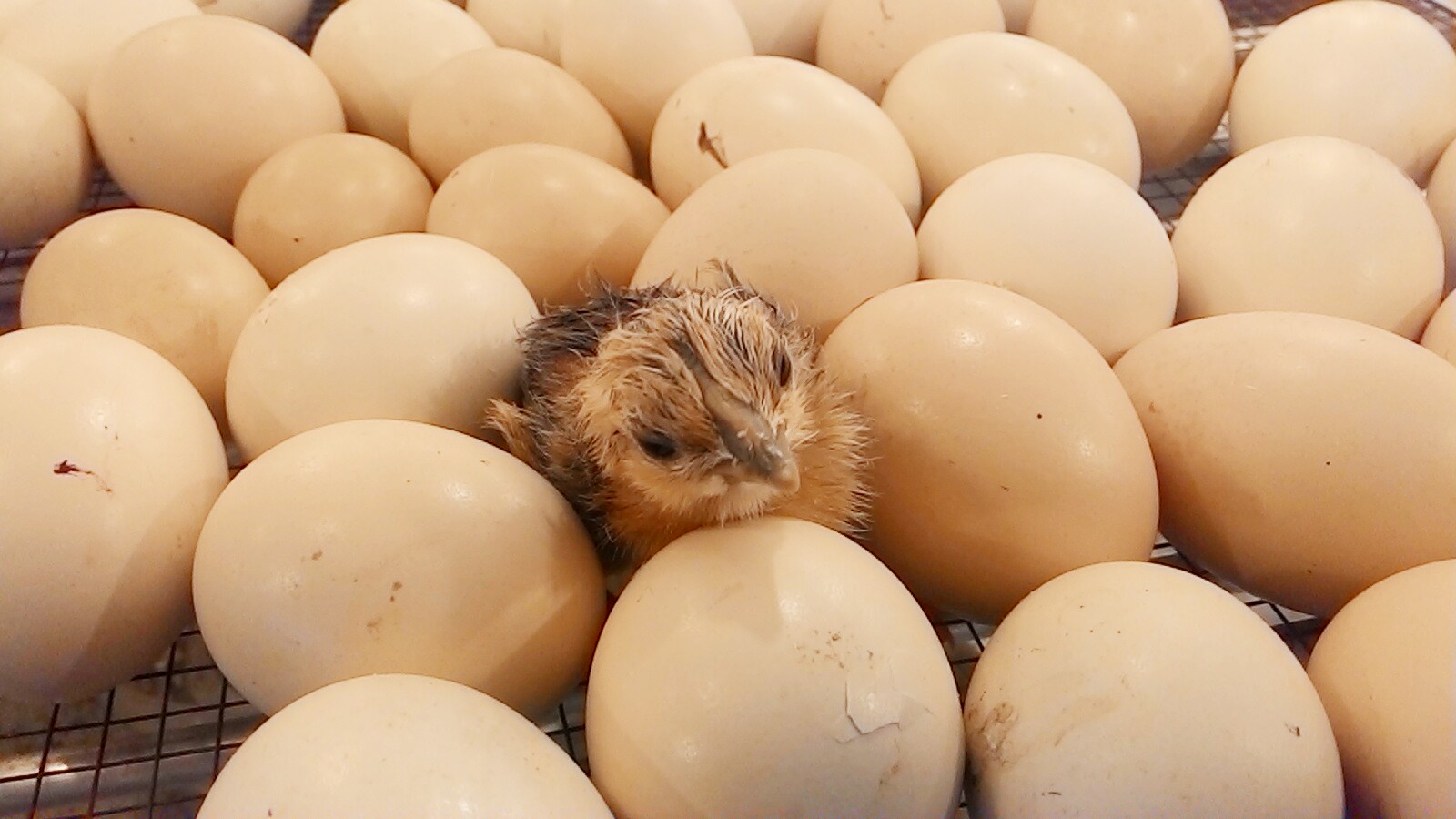Poor results in hatching are commonly caused by the improper control of temperature or humidity. When the temperature or humidity is too high or too low for a long period of time, the normal growth and development of the embryo is affected.
To obtain the best possible hatch, keep the temperature as near 100.5 degrees F. as possible for the entire incubation period in a still air incubator. There will be a fluctuation of two or three degrees above or below 100.5 degrees F., but there should not be prolonged periods of high or low temperatures. High temperature is especially serious.
An incubator that is run warm, constantly averaging a bit above 100.5 degrees F will tend to produce an early hatch. One that is run cold, a bit below 100.5 degrees F will tend to produce a late hatch.
To obtain the proper temperature reading, place the bulb of the thermometer so that it is on a level with the place where the embryos will begin to develop in the eggs. This is approximately 1/4 inch below the top surface of the shell when the egg is on its side. This applies to chicken, duck, pheasant, quail, and other species’ eggs. The bulb of the thermometer should not be in contact with an egg.

Check the thermometer
Check the thermometer. Is it accurate? An error of one degree for 21 days can seriously interfere with embryonic growth.
To check the incubator thermometer, place the bulb next to the bulb of a clinical (the oral kind used to check body temperature) or a laboratory thermometer. Hold under lukewarm tap water and compare the readings. Make an adjustment for any error in the incubator thermometer.
A thermometer in which the mercury column is split will not give an accurate reading.
Humadity
Rarely is the humidity too high in a still-air incubator. Normally, it tends to be low. Thus, the water pan should cover at least one-half of the surface area of the incubator.
The humidity should be raised during the last three days of incubation. Adding another water pan or a wet sponge helps to do this. Embryos need considerable moisture to hatch properly and easily. High humidity tends to produce a late hatch; low humidity an early hatch.
Do not turn the eggs the last three days of incubation. The embryos are moving into hatching position and do not need to be turned. Keep the incubator closed to maintain proper temperature and humidity, but Do not seal it tight for the embryo needs oxygen.
Important
Don’t forget to place a cloth, crinoline is best, on the screen floor of the incubator. This protects the navel, the place where the abdomen closes after surrounding the remains of the yolk, from injury. It also makes cleaning the incubator easier. The longer eggs are held before setting, the lower the fertility will be. Try to set eggs before they are ten days old. At three weeks, the fertility will drop to zero.
Allow the newly hatched chicks to dry out in the incubator until they fluff up. Then place them in a brooding unit.